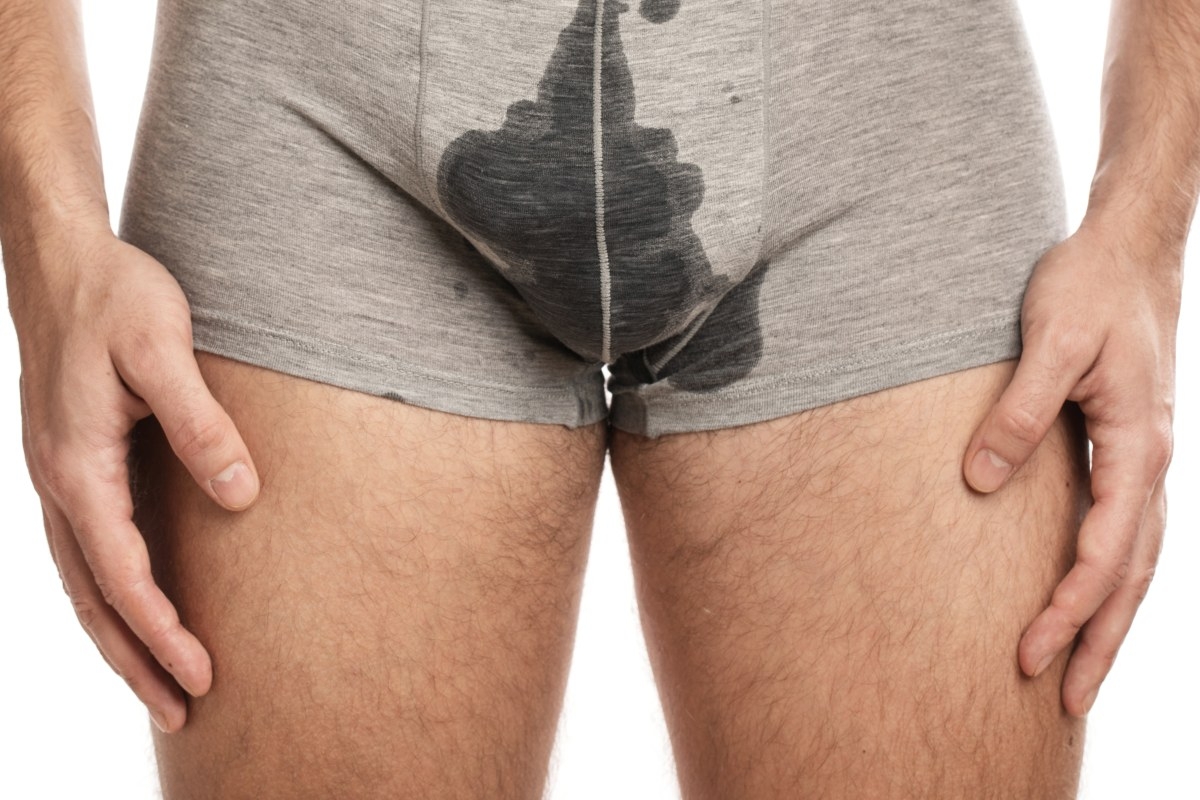In a world increasingly driven by social media influence, there is a new, unexpected trend taking Europe by storm. What started as an innocuous social media challenge has evolved into a full-blown movement among European youth, embracing a curious fashion statement — wet pants. Yes, you heard that right. Forget designer jeans, high-end sneakers, or vintage scarves. Today, what truly sets you apart on the streets of Paris, Berlin, and Amsterdam is the unmistakable, damp mark of what can only be described as the pinnacle of Gen Z rebellion: intentionally wetting your pants.
A Curious Statement of Defiance
While the outside observer may recoil in confusion or disgust, to the youth of Europe, this damp defiance signals something deeper — a rebellion against the norms of cleanliness, decency, and dry trousers. The idea behind this bold fashion choice is simple: why bother keeping your pants dry when wet ones get you more likes, more followers, and — believe it or not — more street cred?
This trend, dubbed “Leaking for Likes”, is being hailed by its champions as the ultimate form of self-expression. “We live in a world where we’re judged for everything”, says Mona (username: @MoistMaven), a 19-year-old trendsetter from Copenhagen. “Our clothes, our looks, our behaviors — all of it is policed. Wet pants are about freedom. It’s about saying, ‘I don’t care if my pants are wet. I’m wet, and I’m proud.’”
In many ways, it’s a rejection of materialism. In this drenched revolution, the youth of today are saying goodbye to fast fashion and hello to something that’s completely within their control: the state of their bladder. After all, why spend money on ripped jeans when you can create an equally memorable, yet far wetter, statement with nothing but a bottle of water — or perhaps, a more organic source?
The Influence of Influencers
No trend reaches mass appeal without the powerful influence of social media, and wet pants are no exception. Influencers from all corners of Europe have begun sharing their moist escapades online, turning what would otherwise be seen as an unfortunate accident into a symbol of status and confidence.
TikTok, in particular, has become the main battleground for this soaked spectacle. Viral videos featuring teens proudly showcasing their dampened garments have garnered millions of views, with captions ranging from “Just leaked a little, no biggie” to “Wet pants, wet vibes, wet life”. It’s clear that what began as a dare — initially viewed with skepticism and confusion — has now become a badge of honor for those brave enough to embrace their inner moisture.
One cannot discuss this trend without mentioning the rise of the “Wet Pants Challenge”, where participants drink copious amounts of liquid and then document the results for their followers. Whether it’s a casual stroll through the city with a growing stain or a dramatic close-up of the aftermath, the challenge has become a rite of passage for Europe’s trendiest youths. “It’s about commitment to the aesthetic”, explains Henrik (username: @SoggySwede), who went viral for filming a TikTok of himself nonchalantly walking through Stockholm’s busiest square with wet trousers. “You can’t fake this. The stain has to be real”.
The Science of Wet Pants: Why Are People Doing This?
At first glance, one might assume that this trend was birthed from a deep psychological need to rebel against societal norms. And while that’s certainly a factor, science has something to say about the unique appeal of wet pants as well. Experts in sociology, fashion psychology, and, of course, fluid dynamics, have weighed in on why Europe’s youth are so eager to engage in public dampening.
Dr. Ingrid von Hosenblut, a professor of postmodern rebellion studies at the University of Munich, explains: “For centuries, we’ve been taught to fear and avoid bodily fluids in public. They’re seen as private, shameful even. But in today’s hyper-connected world, the more you share, the more real you appear. Wet pants are the ultimate demonstration of authenticity. They break the taboo and invite others to question why we fear something so natural. Besides, it’s also about shock value. Nothing gets you noticed like an unexpected wet patch in a public place”.
Of course, one can’t ignore the role of the internet’s obsession with “relatable content”. Wet pants — something we’ve all experienced at least once in our lives — provide a universal connection. By embracing the moisture, these influencers are showing that it’s okay to be imperfect. It’s okay to let go. It’s okay…to leak.
Fashion’s Unforeseen Pivot: From Dry to Damp
While haute couture houses in Milan and Paris have yet to fully embrace the trend, there are already whispers that some forward-thinking designers are considering integrating “wet look” collections into future lines. However, rather than the tried-and-true glossy vinyl fabrics that simulate water, these garments would feature genuine wet patches, strategically applied to garments to give them that “freshly soaked” look.
Lars Spätzle, a rising designer from Berlin, has already begun experimenting with what he calls “Moist Couture”. His latest collection features pants that are pre-dampened, designed to give wearers the look of someone who’s just participated in the Wet Pants Challenge — without the uncomfortable feeling of actual moisture. “It’s about capturing the moment of vulnerability, that split second when you realize you’ve wet your pants, but with the comfort of knowing it’s all intentional”, Spätzle explains, proudly showing off a line of jeans that appear stained but are, in fact, completely dry to the touch.
Unsurprisingly, these avant-garde designs have already been spotted on the streets of major European cities. Fashion-forward individuals in their twenties can be seen casually walking down the boulevards of Paris with what appear to be damp patches across their midsections, unbothered and utterly chic. It’s only a matter of time before this trend infiltrates fashion weeks across the globe.
A Cultural Phenomenon or Just a Fad?
Not everyone is on board with the soggy revolution. Critics argue that the wet pants trend is merely a passing fad, something that will evaporate as quickly as it started. “This is just another example of Gen Z doing something ridiculous for attention”, says Heinrich von Nappies, a 52-year-old traditionalist from Frankfurt. “In my day, we had actual fashion trends, not whatever this is. Wet pants? What’s next, leaking shoes?”
Von Nappies isn’t alone in his skepticism. Many older Europeans view this trend with the same disdain they once reserved for sagging pants or neon-colored hair. However, the youth of today remain undeterred. To them, the trend represents more than just a quirky style choice; it’s a statement of unity and shared experience. “People said the same thing about ripped jeans, and look where we are now”, says Mona, the Copenhagen influencer. “They’ll understand soon enough”.
The Future of Wet Pants
As the trend continues to gain momentum, it’s difficult to predict where it will go next. Some speculate that we may soon see wet pants-themed music festivals, where attendees are encouraged to embrace the wet lifestyle for an entire weekend. Others predict that the trend will move beyond Europe, spreading across the Atlantic to take root in North America, where youth subcultures are always looking for the next big thing.
And who can forget the environmental implications of the wet pants movement? A new wave of eco-conscious individuals is arguing that the trend could actually lead to water conservation. “Why waste water doing laundry every time you have a small accident?” says Fiona (username: @SustainablySoggy), a prominent eco-influencer from Scotland. “If we all embrace the wet pants life, we could save gallons of water per year by reducing the number of times we wash our clothes”.
To Leak or Not to Leak?
In the end, the wet pants phenomenon raises important questions about societal norms, personal freedom, and the power of social media. Will the trend last, or will it dry up as quickly as it appeared? Only time will tell. For now, Europe’s youth are proudly wetting their pants in the name of likes, follows, and a damp sense of belonging. And for the rest of us watching from the sidelines, perhaps it’s time to reconsider our outdated attachment to dry trousers. After all, in the age of social media, being dry just might be the biggest fashion faux pas of all.





